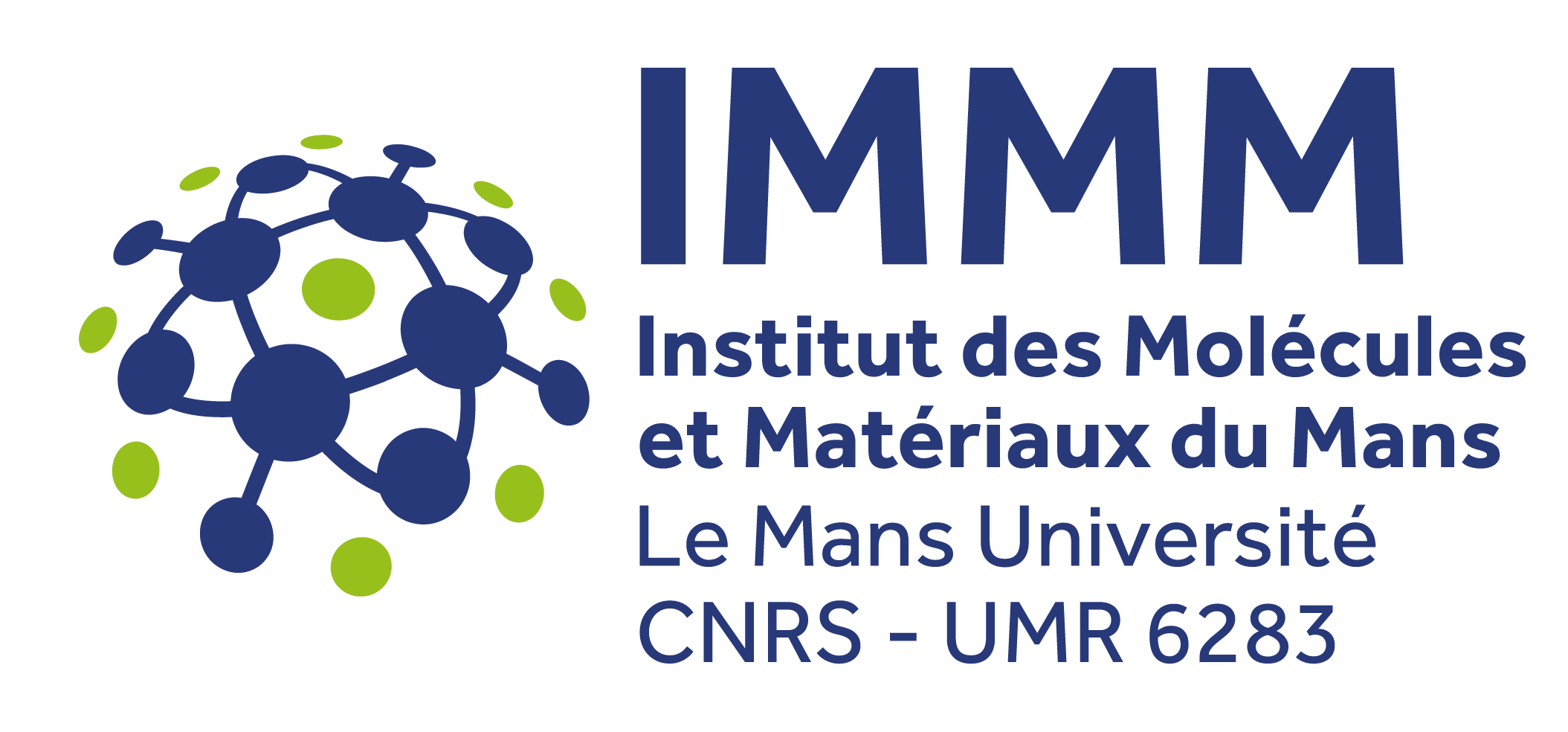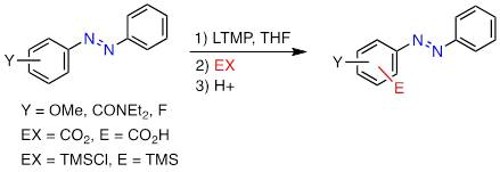Polar organometallics

Directed Metalations
The metalation of arenes in the vicinity of an appropriate directing metalation group by organolithiums, lithium amides and superbases is one of the most powerful method for the regioselective preparation of synthetically useful polyfunctional arenes.
Suitable conditions have been found under which substituted azobenzenes can undergo effective and regioselective lithiation. This new reaction allows a late-stage functionalization of the azobenzene scaffold and nicely complements palladium-catalyzed regioselective functionalization reactions of aromatic azo compounds.
Researchers
- Anne-Sophie Castanet
- Anne Boussonnière
- Jacques Mortier
Related papers
- Chemoselective Deprotonative Lithiation of Azobenzenes: Reactions and Mechanisms: Thi Thanh Thuy, N.; Boussonniere, A.; Banaszak, E.; Castanet, A.-S.; Kim Phi Phung, N.; Mortier, J. Journal of Organic Chemistry 2014, 79 (6), 2775.
Diaddition of organometallics onto nitrile
The addition of organometallics to nitriles is generally limited to a single addition, but the double addition leading to tertiary carbinamines could also occur in specific cases, such as in the chemoselective addition of Grignard reagents onto acylcyanohydrins developed in our group.
In this reaction, the selectivity of the Grignard reagents toward the nitrile moiety at the expense of the ester function is due to the proper structure of the acylcyanohydrin and is remarkable in THF. The selectivity was improved using 1-naphthoyl derivative as substrate and the addition of two different Grignard reagents was managed by the use of unreactive alkynyl organomagnesium reagent. Nevertheless, with certain Grignard reagents, some side-products resulting from the addition onto the ester drop the yield, and acylcyanohydrins displaying activated ester moiety, carbonate or other functional group present on the ester moiety could not be used.
Furthermore, the introduction of electrophilic substituent on the organometallic reagent is not feasible using organomagnesium halides. This limitation was solved by exploring the chemistry of organozinc reagent which required mild conditions and showed to be a good alternative in terms of functional group tolerance (various FG group ) and efficiency (quantitative).
Researchers
- Morwenna Pearson-Long
- Fabien Boeda
- Philippe Bertus
Related papers
- Successive addition of two different Grignard reagents to nitriles: access to α,α-disubstituted propargylamine derivatives, Caillé, F. Boukattaya, F. Boeda, M. S. M. Pearson-Long, H. Ammar, P. Bertus,Org. Biomol. Chem. 2018, 16, 1519-1526.
- Simple and convenient access to α,α,α-trisubstituted amides by double addition of Grignard reagents to acyl cyanohydrins, Boukattaya, A. Stanovych, P. Setzer, S. Abid, H. Ammar, M. S. M. Pearson-Long, P. Bertus, Chem. Commun. 2012, 48, 8655-8657. Synfacts 2012, 8(11), 1244
Enantioselective reactions
We are also interested in enantioselective reactions using organolithium organomagnesium reagents as nucleophiles.
A new family of chiral 1,2-amino ethers has been efficiently synthesized in a short and scalable synthetic sequence from readily available and inexpensive α -amino or α -hydroxy acids. Stoichiometric or substoichiometric amounts of these chiral ligands can serve as effective promoters for enantioselective intramolecular carbolithiation reactions. In an effort to rationalize our experimental results, theoretical calculations using density functional theory have been conducted in order to model the course of this enantioselective reaction.
Researchers
- Anne-Sophie Castanet
- Anne Boussonnière
- Jacques Mortier
Related papers
- Readily Accessible 1,2-Amino Ether Ligands for Enantioselective Intramolecular Carbolithiation, Guyon, H.; Boussonnière, A.; Castanet, A.-S. J. Org. Chem. 2017, 82 (9), 4949.
- Transition-Metal-free Enantioselective Reactions of Organomagnesium reagents mediated by chiral ligands, Guyon, H.; Boussonnière, A.; Castanet, A.-S. Synthesis 2018, 50, 3589.










